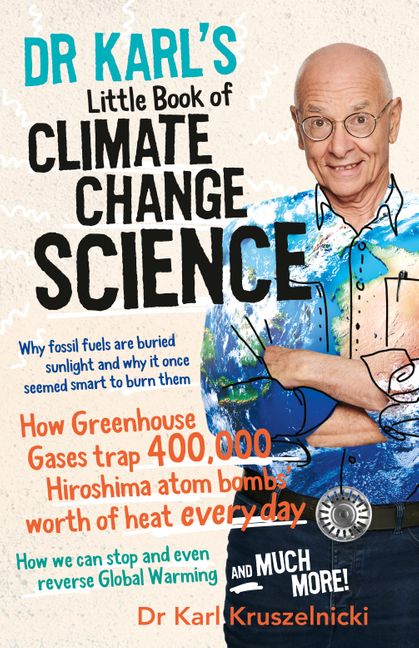Report on Recent Scientific Research with Emphasis on Sustainable Development Goals (SDGs)
1. Increasing Combinations of Climate Hazards by 2100
Recent modeling studies indicate that under current greenhouse gas emission trajectories, communities worldwide will increasingly face multiple simultaneous climate hazards. Notably:
- Global rise in paired heatwaves and wildfires.
- Increased occurrence of heatwaves coupled with crop failures in Africa and the Americas.
- More frequent heatwaves combined with soil drought around the Mediterranean region.
This research highlights critical challenges to SDG 13: Climate Action, SDG 2: Zero Hunger, and SDG 3: Good Health and Well-being, emphasizing the urgent need for integrated climate resilience strategies.
Reference: Earth’s Future study
2. Geological Causes of Snowball Earth Events
New findings suggest that massive exposed rock beds composed of fresh volcanic material, stretching from Alaska through Northern Canada to Greenland, may have triggered ancient Snowball Earth events (1 billion to 540 million years ago). The weathering of these rocks removed atmospheric carbon dioxide, inducing a reverse greenhouse effect and global cooling.
This study contributes to understanding Earth’s climate history and supports SDG 13: Climate Action by providing insights into natural climate regulation mechanisms.
Reference: Journal of Geophysical Research: Planets study
3. Advancements in AI Navigation Inspired by Human Synesthesia
A novel machine learning model named “Synesthesia of Machines” has demonstrated superior performance in predicting paths for driverless cars. By integrating multiple sensory inputs such as mmWave radar, LiDAR, RGB-Depth cameras, and light detection, this system enhances response speed and accuracy in complex urban environments.
This innovation aligns with SDG 9: Industry, Innovation and Infrastructure and SDG 11: Sustainable Cities and Communities, promoting safer and more efficient intelligent transportation systems.
Reference: Radio Science study
4. Health Risks Linked to Breaching Planetary Boundaries
A comprehensive review of current scientific literature reveals a direct association between exceeding nine critical planetary boundaries and increased health risks. Key findings include:
- Higher temperatures and pollution levels correlate with increased cardiovascular and respiratory diseases.
- Vulnerable populations experience worsening health outcomes due to environmental degradation.
This underscores the importance of SDG 3: Good Health and Well-being and SDG 13: Climate Action, advocating for environmental stewardship to safeguard human health.
Reference: GeoHealth review
5. Reassessment of the EPA’s Greenhouse Gas Endangerment Finding
Scientists who contributed to the 2009 EPA determination that greenhouse gases endanger public health have revisited their findings amid reconsideration of the policy. Their updated analysis reaffirms the ongoing threat posed by greenhouse gases to public health and environmental stability.
This work supports continued commitment to SDG 13: Climate Action and SDG 3: Good Health and Well-being.
References: Eos research spotlight, AGU Advances study
6. Marine Life Origins in Antarctic Submarine Canyons
A recent study explores the sources of phytoplankton in the Palmer Deep submarine canyon, distinguishing between locally produced and externally delivered marine life. Understanding these dynamics is vital for marine ecosystem conservation.
This research contributes to SDG 14: Life Below Water, emphasizing the protection and sustainable use of ocean resources.
References: Eos research highlights, JGR Oceans study
7. Early Ape Evolution in Fire- and Volcano-Disturbed Tropical Forests
Fossil discoveries at an early Miocene site in Kenya reveal a new early ape species and provide insights into the environmental conditions of human ancestors. The findings indicate that these apes evolved in tropical forests affected by fires and volcanic activity.
This study informs SDG 15: Life on Land by enhancing understanding of biodiversity and ecosystem changes over geological time.
References: Eos research highlight, Paleoceanography and Paleoclimatology study
1. Sustainable Development Goals (SDGs) Addressed or Connected
- SDG 3: Good Health and Well-being
- Related to increased health risks from climate change and pollution.
- SDG 13: Climate Action
- Concerns about heatwaves, wildfires, climate hazards, greenhouse gas emissions, and planetary boundaries.
- SDG 15: Life on Land
- References to forest disturbances by fires and volcanoes affecting early apes and ecosystems.
- SDG 9: Industry, Innovation and Infrastructure
- Innovation in AI-driven cars and intelligent transportation systems.
- SDG 14: Life Below Water
- Study of Antarctic submarine canyons and marine life sources.
2. Specific Targets Under Those SDGs Identified
- SDG 3: Good Health and Well-being
- Target 3.9: Reduce illnesses and deaths from hazardous chemicals and air, water, and soil pollution and contamination.
- SDG 13: Climate Action
- Target 13.1: Strengthen resilience and adaptive capacity to climate-related hazards and natural disasters.
- Target 13.2: Integrate climate change measures into policies and planning.
- SDG 15: Life on Land
- Target 15.1: Ensure the conservation, restoration and sustainable use of terrestrial and inland freshwater ecosystems.
- SDG 9: Industry, Innovation and Infrastructure
- Target 9.5: Enhance scientific research, upgrade technological capabilities of industrial sectors, including sustainable infrastructure.
- SDG 14: Life Below Water
- Target 14.2: Sustainably manage and protect marine and coastal ecosystems to avoid significant adverse impacts.
3. Indicators Mentioned or Implied to Measure Progress
- SDG 3 Indicators
- Incidence rates of cardiovascular and respiratory diseases linked to environmental pollution and climate change.
- SDG 13 Indicators
- Frequency and intensity of combined climate hazards such as heatwaves, wildfires, flooding, and droughts.
- Greenhouse gas emission levels and trends.
- Number of communities affected by multiple climate hazards.
- SDG 15 Indicators
- Extent of forest disturbances caused by fires and volcanic activity.
- Changes in biodiversity and habitat conditions in terrestrial ecosystems.
- SDG 9 Indicators
- Performance metrics of AI-driven transportation systems such as accuracy and response time in navigation.
- Adoption rate of innovative technologies in transportation infrastructure.
- SDG 14 Indicators
- Proportion of phytoplankton production that is locally generated versus delivered in marine ecosystems.
- Health and biodiversity status of submarine canyon ecosystems.
4. Table: SDGs, Targets and Indicators
| SDGs | Targets | Indicators |
|---|---|---|
| SDG 3: Good Health and Well-being | Target 3.9: Reduce illnesses and deaths from hazardous chemicals and pollution. | Incidence rates of cardiovascular and respiratory diseases linked to pollution and climate change. |
| SDG 13: Climate Action |
|
|
| SDG 15: Life on Land | Target 15.1: Conservation and sustainable use of terrestrial ecosystems. |
|
| SDG 9: Industry, Innovation and Infrastructure | Target 9.5: Enhance scientific research and technological capabilities. |
|
| SDG 14: Life Below Water | Target 14.2: Sustainably manage and protect marine ecosystems. |
|
Source: news.agu.org






